1. World’s Largest Ball of Twine in Kansas

This massive, ever-growing sphere is located in Cawker City, Kansas, and was started by farmer Frank Stoeber in 1953. Stoeber continued wrapping sisal twine until his death in 1974, by which point the ball held 1.6 million feet of twine and weighed 11 tons. The town took over its maintenance, and every August, during the annual “Twine-a-Thon,” visitors are encouraged to add their own contributions, ensuring the ball never stops expanding. As of 2018, it weighed 20,873 pounds, with a circumference of 41.42 feet, embodying a collective community effort and becoming a quintessential symbol of quirky Americana. It stands as a testament to the simple, enduring appeal of a shared, slightly absurd goal.
2. Cadillac Ranch in Amarillo, Texas
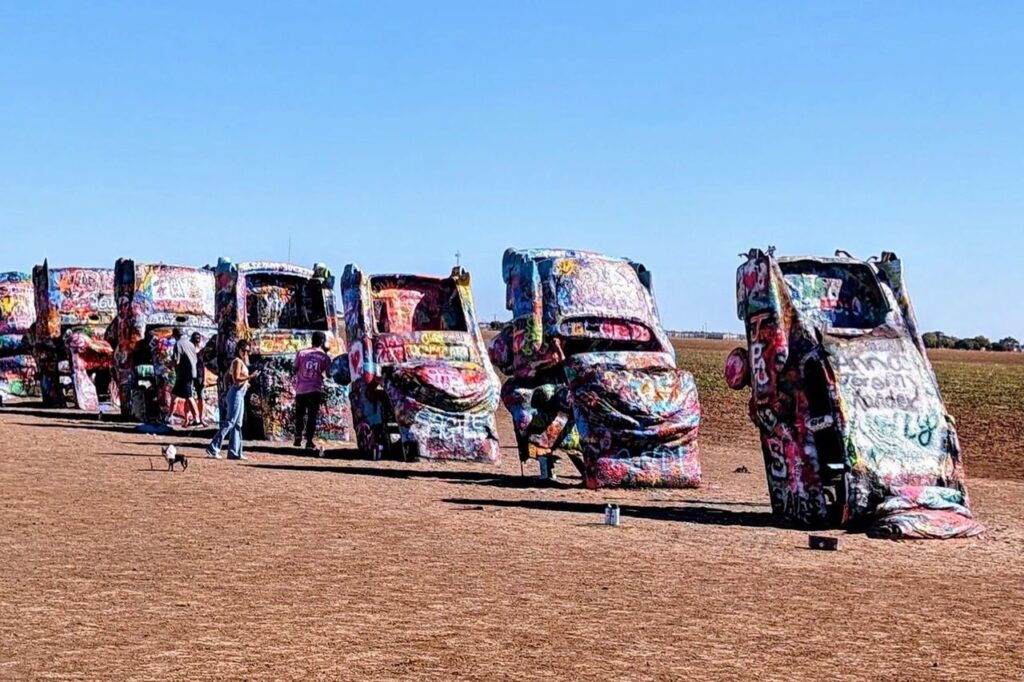
A surrealist spectacle off Route 66, the Cadillac Ranch consists of ten vintage Cadillacs, models ranging from 1949 to 1963, half-buried nose-down in a row in a Texas field. The public art installation was created in 1974 by the art group Ant Farm and was funded by eccentric local millionaire Stanley Marsh III. The cars are positioned to showcase the evolution of the iconic Cadillac tailfin. Visitors are tacitly encouraged to bring their own cans of spray paint, resulting in the cars being a constantly evolving, thick-skinned canvas of colorful graffiti. The installation was moved two miles west of its original location in 1997 to keep up with the expanding city limits, cementing its status as an interactive, living monument to American automobile culture and the spirit of rebellion.
3. Carhenge in Alliance, Nebraska

Paying homage to England’s ancient Stonehenge, Carhenge is an incredibly faithful, full-scale replica built entirely from vintage American automobiles. Dedicated during the summer solstice in 1987 by artist Jim Reinders as a memorial to his father, the structure features 39 spray-painted gray cars arranged in the same proportions as the original stone monument. Some cars are buried trunk-down, while others are welded on top to form the iconic trilithons. The site, which also includes other automotive art pieces, stands as a wonderfully witty blend of cultural homage and industrial recycling. It beautifully captures the spirit of the High Plains: vast, open, and full of unexpected, homegrown ingenuity.
4. The World’s Largest Egg in Vegreville, Alberta

This colossal, 31-foot-long structure is a Pysanka, or Ukrainian Easter egg, located in Vegreville, a town with a strong Ukrainian-Canadian heritage. The Vegreville Pysanka was erected in 1975 to commemorate the 100th anniversary of the Royal Canadian Mounted Police and to celebrate the area’s cultural diversity. It’s an intricate, three-dimensional geometric puzzle designed by computer scientist and artist Paul Sembaliuk, consisting of 3,500 pieces of aluminum and 6,848 nuts and bolts. The polished silver and gold shell displays a complex, nine-pointed star pattern that symbolically represents life and eternal security. It is a stunning example of engineering and cultural art, towering over a local park and drawing visitors with its unique beauty and precise construction.
5. Lucy the Elephant in Margate, New Jersey
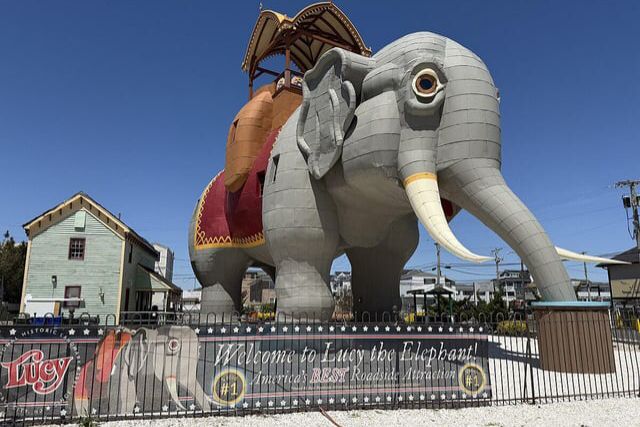
Built in 1881 by real estate developer James V. Lafferty, Lucy is a six-story, 65-foot-tall wooden elephant originally intended to attract land buyers to the area south of Atlantic City. Constructed of wood and covered with tin sheeting, the architectural oddity initially served as a hotel, a restaurant, and a summer rental cottage. Over the decades, the massive pachyderm fell into disrepair and was nearly demolished, but a local grassroots effort successfully saved and restored her. Listed on the National Register of Historic Places, Lucy now stands as a beloved historical landmark and museum, inviting visitors to climb a spiral staircase inside and peek out through the howdah on her back for a unique seaside view.
6. The Blue Whale of Catoosa on Route 66, Oklahoma
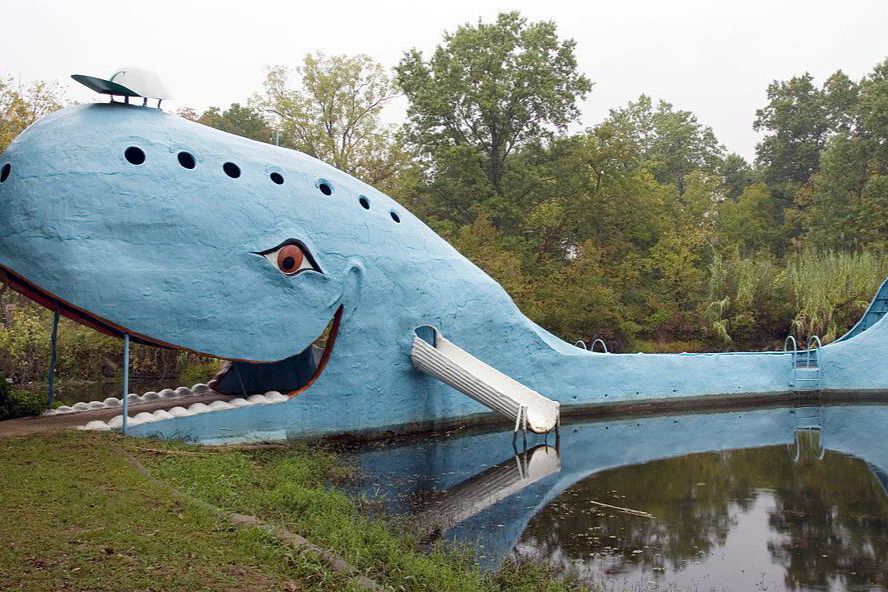
This enormous, grinning blue whale is one of the most beloved and recognizable landmarks along the historic Route 66. Built in the early 1970s by Hugh S. Davis, a local zoologist, the 80-foot-long, 20-foot-tall structure was originally a surprise anniversary gift for his wife, Zelta, who collected whale figurines. Hugh, along with a friend, spent two years welding the iron framework and hand-applying cement, one five-gallon bucket at a time. Intended as a swimming dock and attraction for their grandchildren and local children, the spring-fed pond and whale became a popular stop for travelers. Although swimming is no longer permitted, a successful community effort restored the structure in 1997, ensuring its place as a cheerful icon of the Mother Road.
7. Hole N’ The Rock House in Moab, Utah
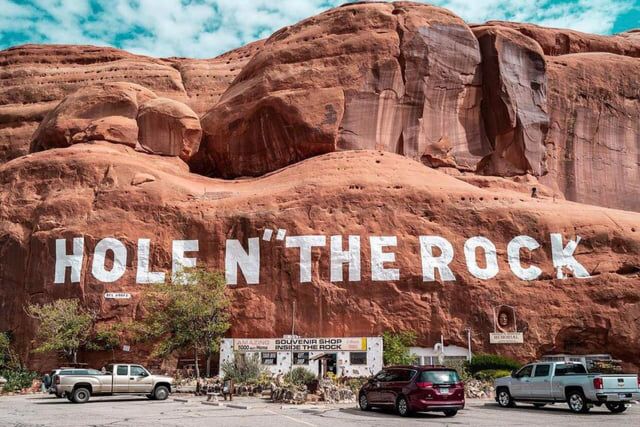
Hole N’ The Rock is a unique, 5,000-square-foot home meticulously carved into a massive sandstone cliff, 12 miles south of Moab. Construction began in 1940 by Albert Christensen, who, over 12 years, excavated an astounding 50,000 cubic feet of sandstone to create a 14-room dwelling. The home features shelving cut directly into the rock walls, a fireplace with a 65-foot chimney, and even a concrete bathtub carved out of the solid stone. After Albert’s death in 1957, his wife Gladys turned it into a public attraction. Today, the site offers tours of the cave-home, which is filled with original Christensen belongings, alongside a general store and an exotic animal petting zoo.
8. Coral Castle in Homestead, Florida
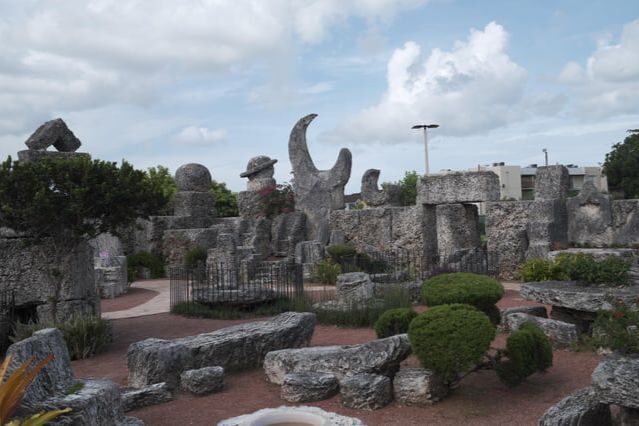
The Coral Castle is a mysterious oolitic limestone structure built entirely by Latvian-American eccentric Edward Leedskalnin between 1923 and 1951. Despite being only five feet tall and weighing about 100 pounds, Leedskalnin single-handedly quarried, carved, and assembled over 1,100 tons of stone into an open-air castle, a tribute to his lost love. The creation includes massive 8-foot-tall wall stones, an accurate sundial, a polar telescope, and furniture, all made from single pieces of rock. A massive 9-ton gate was once so perfectly balanced it could be moved with the touch of a finger. The precise and heavy construction, done secretly and without mortar, continues to baffle engineers, leading to local legends about reverse magnetism or supernatural abilities.
9. Wall Drug Store in Wall, South Dakota
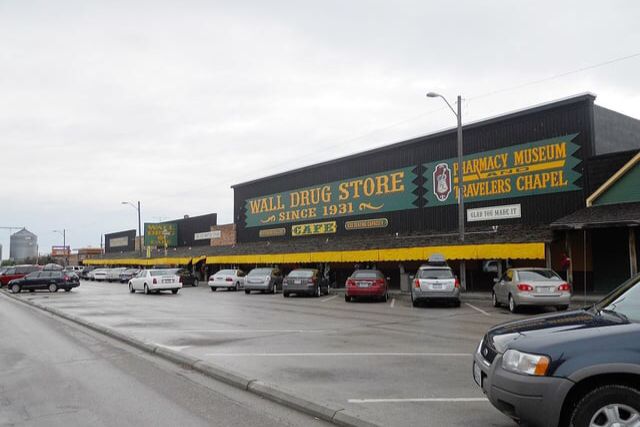
This iconic attraction began in 1931 when Ted and Dorothy Hustead bought a struggling drug store in the small, remote town of Wall during the Great Depression. The Husteads struggled to attract customers until Dorothy had the idea to advertise free ice water to thirsty travelers heading to Mount Rushmore. The simple sign offering “Free Ice Water” soon appeared for miles, drawing massive crowds. Today, Wall Drug is a massive, sprawling complex covering an entire block, featuring not only the pharmacy but also restaurants, souvenir shops, a chapel, an art gallery, and a Western-themed attraction with animated displays. It is a brilliant example of grassroots marketing and a necessary, entertaining pit stop in the Badlands.
10. The World’s Largest Pistachio in Alamogordo, New Mexico
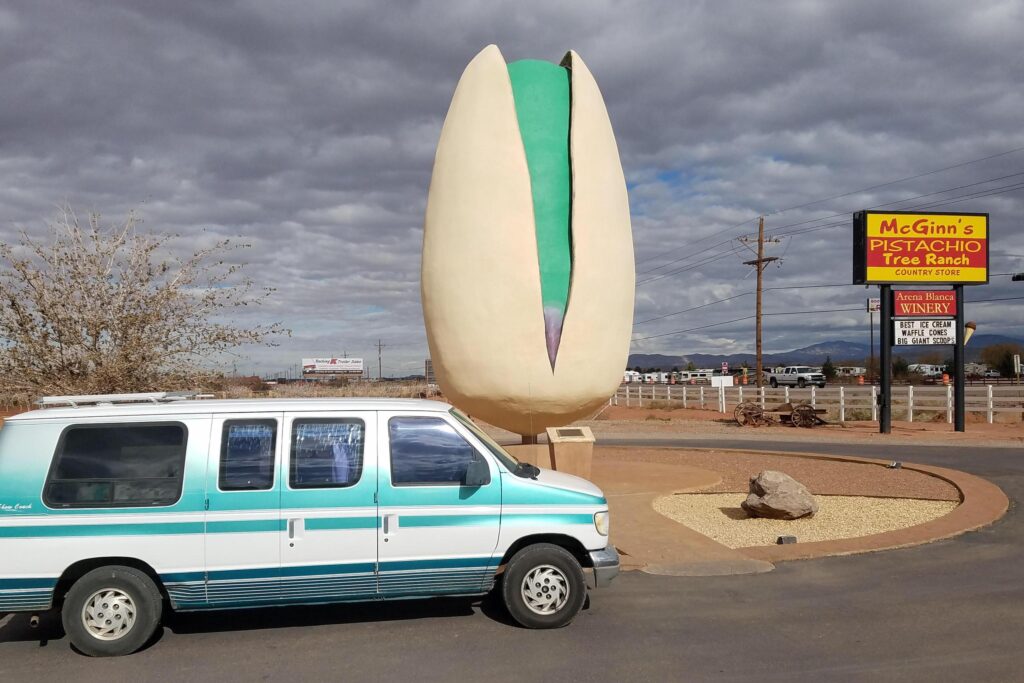
A delightful, nut-shaped sculpture stands proudly at PistachioLand, home of the McGinn’s Pistachio Tree Ranch. This massive monument, which is 30 feet tall and weighs approximately seven tons, was built in 2007 by Tim Stahmann, the son of the farm’s founder, George McGinn. It was constructed using concrete, covered with a urethane coating to resemble the texture of a real pistachio, and painted to achieve a realistic hue. The sculpture was built as a memorial to the ranch’s founder, George McGinn, and serves as a highly visible draw for the farm’s store and processing plant. It perfectly blends agriculture, art, and humor, letting travelers know they have arrived at the home of New Mexico’s beloved nut industry.
11. The Jolly Green Giant Statue in Blue Earth, Minnesota
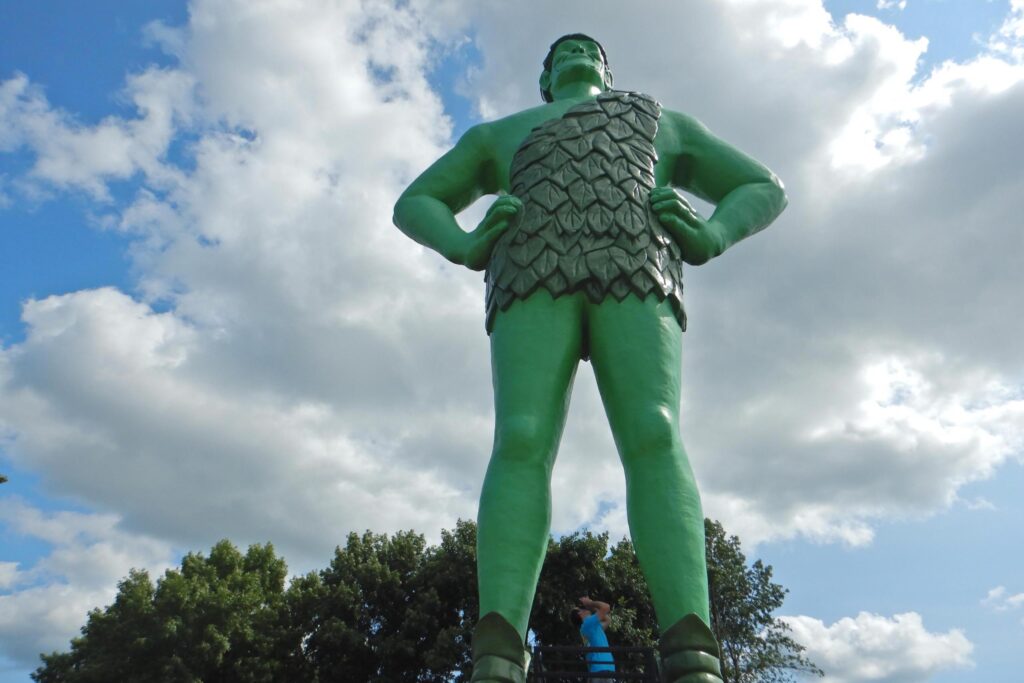
Standing 55.5 feet tall, this iconic statue of the Jolly Green Giant has overlooked the Minnesota farmlands of Blue Earth since 1979. The colossal figure was conceived by Paul C. Hedberg, a local radio station owner, to attract drivers from the newly completed Interstate 90 into the town. Blue Earth was chosen because the area was a major processing region for the Green Giant canning company. Constructed of fiberglass, the giant weighs 8,000 pounds and wears a size 78 shoe. Despite the immense size of the project, Hedberg and local businesses successfully raised the necessary $60,000 for its creation in just one week, proving the power of community spirit and roadside advertising.
12. The Enchanted Highway in North Dakota
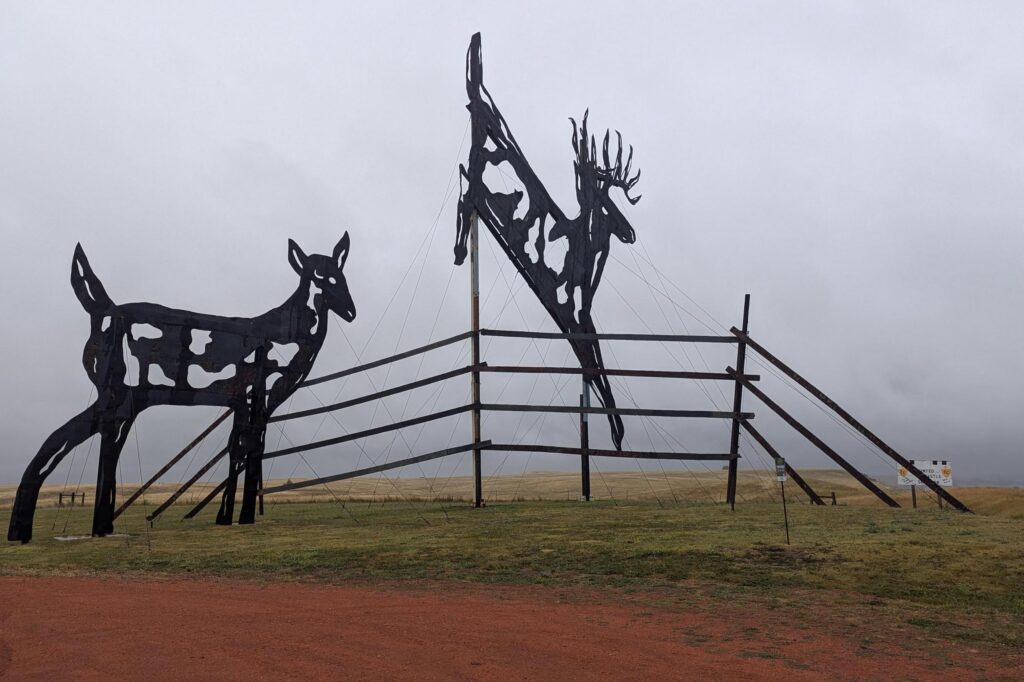
The Enchanted Highway is not a single stop but a continuous, 32-mile stretch of county road in North Dakota featuring a series of colossal scrap metal sculptures. Local artist Gary Greff began the project in 1989 with the goal of bringing tourists and economic life back to his small, struggling hometown of Regent. Each of the ten massive structures, which include gigantic grasshoppers, deer, and a family of tin people, is a true feat of engineering and creativity. His largest work, “Geese in Flight,” holds the Guinness World Record for the largest scrap metal sculpture, towering 110 feet high and spanning 154 feet wide, demonstrating a determined effort to redefine rural landscapes through art.
13. World’s Largest Basket Building in Newark, Ohio
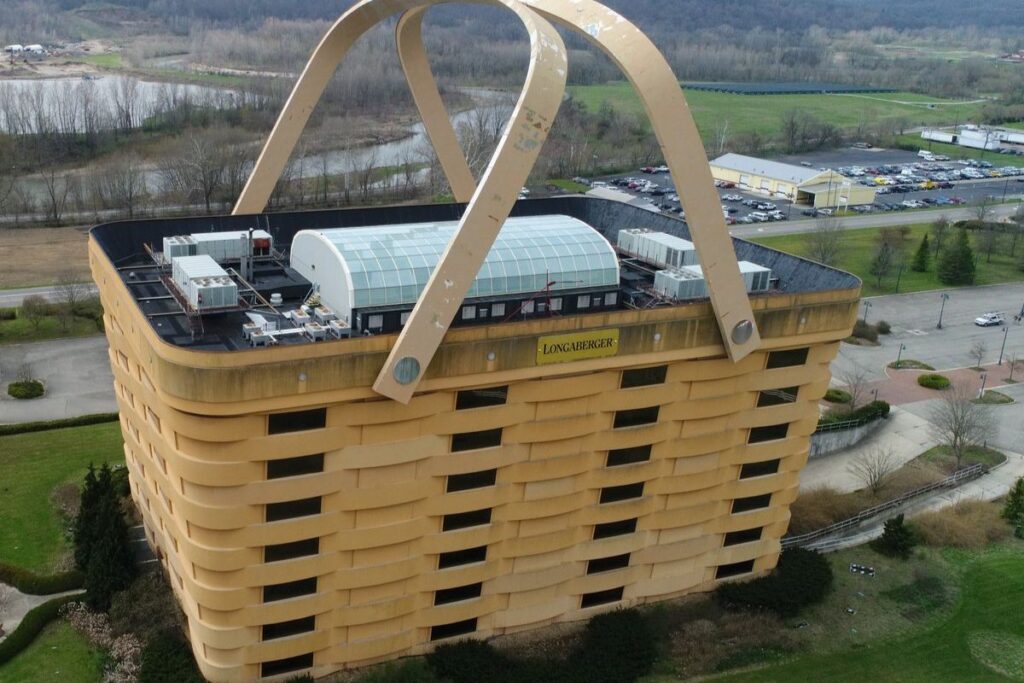
This striking example of novelty architecture was once the headquarters of the Longaberger Company, a manufacturer of handcrafted maple wood baskets. Completed in 1997, the seven-story building is a massive, 160-times-larger replica of the company’s best-selling Medium Market Basket. The 180,000-square-foot structure features stucco panels painted to mimic the woven texture of a basket and is topped with two 75-ton steel handles that are heated to prevent ice from falling onto the glass atrium below. The eccentric design was the unwavering vision of company founder Dave Longaberger, who declared, “If they can put a man on the moon, they can certainly build a building that’s shaped like a basket,” creating a distinct and memorable corporate landmark.
The next time you see a sign for something claiming to be the world’s biggest, smallest, or strangest, we hope this list encourages you to pull over and investigate. These roadside marvels are a vibrant patchwork of American folk art and engineering, proving that sometimes, the most memorable part of the journey isn’t the destination, but the delightful, unexpected detour.
Like this story? Add your thoughts in the comments, thank you.
This story 13 Roadside Attractions That Earned the Detour was first published on Daily FETCH


